|
      
|
|

|
| |
|
How To Paint
Birds by James Tan |
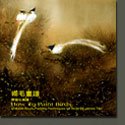 |
Birds in nature because of the geographical, climatic
and living habits are different, wide range of varying sizes and various
shapes. Chinese paintings of birds, reproduction of birds natural properties,
such as the peacocks ,Golden pheasants and Mandarin Duck show their magnificent
wings and eagles and cranes show their varied dynamics. On the expression
of the intention of the painter, reflect the painter’s aesthetic conception
and aesthetic intent, with a degree of subjectivity.

|
| |
|
In
Search of Inspiration - The Art of James Tan |
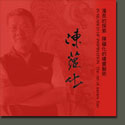 |
James Tan graduated from the Singapore Academy of Art in 1972 and continued
his studies with Chinese brush painting masters in Singapore, Taiwan and
San Francisco until 1980 establishing himself as a master of the traditional
and Lingnan schools of Chinese brush painting with his own distinctive
style. He has taught and lectured extensively world-wide, including The
National Museum Art Gallery (Singapore), The Victoria and Albert Museum
in London. and annual lecture & demonstration at the arts in Action? festival
in London, U.K. Mr. Tan has won an extensive list of awards and honors
and has exhibited extensively. 38 one-man shows in Singapore, Japan, Thailand,
Dubai, Bahrain, Australia, England, Germany, the U.S.A., and Canada. New
Book come in E book version / 160 pages / 270 pages version

|
| |
|
JAMES TAN
|
|
RECENT WORKS
|
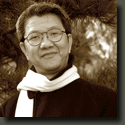 |
In his years of study with
established masters of the Lingnan school and more than fifteen more years
of teaching other aspiring artists, James Tan has now emerged as a leader
of the next generation of Lingnan brush painting masters. James
Tan's contemporary work retains the same e......

|
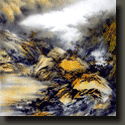 |
Mr. Tan has won an extensive list of awards and honours
and has exhibited extensively. 36 one-man shows in Singapore, Japan, Thailand,
Dubai, Bahrain, Australia, England, Germany, the U.S.A., and Canada.
James' recent works retain the same exquisite ..........

|
| |
|
|
|
Lingnan School
of Painting |
|
2009 AsiaNetwork
Asian of the Year Awards |
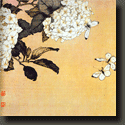 |
Lingnan' or 'South of the Ranges' refers to that part
of China to the south of the 'Five Ranges' which are Tayu, Qitian, Dupang,
Mengzhu, Yuecheng. These ranges separate the river basin of Changjiang,
or the Yangzi River, in the central part of China fr'om ................... |
 |
Mr. James Tan is a Chinese Canadian Brush Artist/Painter
from Vancouver, British Columbia. In his years of study with established
masters of the Lingnan school and more than fifteen years of teaching
other aspiring artists, Mr. Tan has now emerged as a leader of the next
generation........ |
| |
|
|
 Liu Kang 1911 - 2004
Liu Kang 1911 - 2004 |
|
 Chen WenHsi 1906 - 1991
Chen WenHsi 1906 - 1991 |
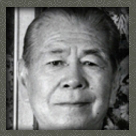 |
|
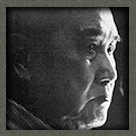 |
|
He was born in Fujian
Province and he spent his early years in Malaysia, studied art in Shanghai
and Paris, and taught art in Shanghai during the 1930s. Under the influence
of Chinese artist and art teacher Liu Haisu (1896–1994), Liu admired,
and often appropriated the styles of French-based modernist painters such
as Cézanne, van Gogh and Matisse. Liu Kang came to Singapore in 1942 and
had been
 |
He was born in Baigong in Guangdong province, and had his early education
at Chen Li Primary School and St. Joseph Middle School. After graduation
from secondary school, Chen Wen Hsi decided to study full-time in fine
art at the Shanghai College of Art in 1928, despite his uncle's objection.
Unhappy with the college, Chen transferred to the Xinhua College of Art
in Shanghai,
 |
| |
|
|
|
|
|
 Cheong SooPieng 1919 - 1983
Cheong SooPieng 1919 - 1983 |
|
 Lee ManFong 1913 - 1988
Lee ManFong 1913 - 1988 |
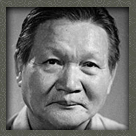 |
|
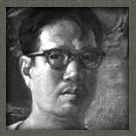 |
|
Cheong was born the youngest of seven children in Amoy, China. His parents
were neutral to his choice of education, when Cheong took to studying
art at in the Xiamen Academy of Fine Art in 1933. In 1936 Cheong graduated
and attended Xinhua Academy of Fine Art in Shanghai for further studies,
only to have his education cut short with the breakout of the Sino-Japanese
War and the school destroyed by Japanese invaders in 1938.
 |
(b. 1913, Guangdong, China–d. 1988, Jakarta, Indonesia) was a prominent
artist based in Indonesia and Singapore. Primarily working with oil paintings,
Lee was associated with the Nanyang style, which blends Chinese techniques
and subjects with Western composition styles and mediums.
 |
| |
|
|
|
|
|
|
Pan Yu-Liang 1895-1977 |
|
Zhang Daqian 1899-1983 |
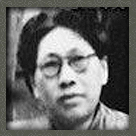 |
|
 |
|
Pan Yuliang's complicated life gets more plentiful after her participation
in art, with her defying and fending characteristics and through movies
and teleplays, the world could rediscover her talent and her art. In 2006
spring, her solo exhibition "Pan Yuliang - the painting soul" was held
in National Museum of History and National Taiwan Museum of Fine Arts,
through 120 paintings, her life and her art were clearly displayed, and
the Pan Yu-liang fever is on the rise.
 |
Zhang Daqian, original name Zhang Yuan (張爰) and pseudonym Daqian, was
one of the best-known and most prodigious Chinese artists of the twentieth
century. He is also regarded by many art experts as one of the most gifted
master forgers of the twentieth century. He excelled at all types of paintings,
and is especially famous for his landscape, as well as lotus paintings.
 |
| |
|
|
|
|
|
|
Lingnan Master Gao
Jian-Fu |
|
Lingnan Master Gao
Jian-Fu |
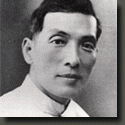 |
Gao Jianfu younger brother, Qifeng, accompanied him
to Japan, where the younger man studied the art of Japanese realism, or
Nihonga. This painting, with its combination of Western naturalism and
Japanese decorative style, is a superb example of the manner he learned
in Japan.
 |
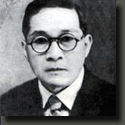 |
Gao Jianfu began studying with a prominent local artist,
Ju Lian, in Keshan, Guangdong at the age of fourteen. He learned under
his master's tutelage to paint flowers, plants, and insects in a subtle
and highly naturalistic manner. Immediately before he executed this set
of paint... |
| |
|
|
|
Lingnan
Master Chen shu-ren |
|
Japanese Connection |
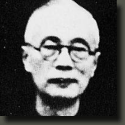 |
Chen Shu-Ren, whose original name was Shao, alias Nianhua-weixiaozi,
Dean-laoren and Ershan-shanqiao, was born at Mingjing Village of Panyu
District in the Guangdong Province. At the age of seventeen, he studied
painting under Ju Lian, the great flower painter of ......

|
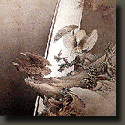 |
Although the Lingnan School stresses renewal and creativity,
its essential spirit does not reside in rejection of traditional methods
and inspiration. Rather, we consider ourselves heirs of tradition and
we strive, clearly, toward a catholicity which reassesses traditional
techniques and values, .......

|
| |
|
|
|
|
|
Lectures & Demonstrations |
|
Bichon Frise |
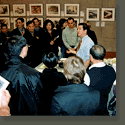 |
The James Tan
Art Gallery offers Lectures & demonstrations will be on a monthly basis
held on Sunday from 1:00 pm to 4:00 pm at the Gallery. limited up
to 12 - 15 only. Information on these demonstrations, called "Painters
in Action", .........call 604-677-4082

|
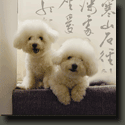 |
The Artist hand signs each
card, Greeting card
size: 5" x 8".Cards are CDN$4.50
each ?minimum of 10 assorted cards, Shipping is actual cost, no handling
fees.

|
| |
|
|
|
Chinese Zodiac |
|
Rental Gallery |
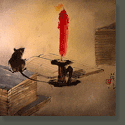 |
More than 30,000 years ago, Chinese ancestors invented
the 10 Tian Gan (or heavenly stems) and 12 Di Zhi (or 12 earthly branches
for chronological purpose. Later, people used 12 animals to symbolize
the 12 earthly branches in order to make things easier to memorize ........... |
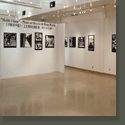 |
The Art Space
support Fine Artists working in all media to develop professionally, to
obtain venues for exhibitions, demonstrations and classes, and to reach
wider audiences. We believe in helping artists to develop .........

|
| |
|
|
|
ART BOOK |
|
ART CARDS |
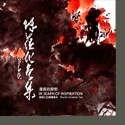 |
Chinese Brush Painting
by James Tan and his Students
12"x 12" book full colour with
more than 70 pcs of art work by James Tan and his students
in Singapore. plus postage.

|
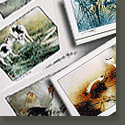 |
The Artist hand signs each
card, Greeting card
size: 5" x 8".Cards are CDN$4.50
each ?minimum of 10 assorted cards, Shipping is actual cost, no handling
fees.

|
| |
|
|